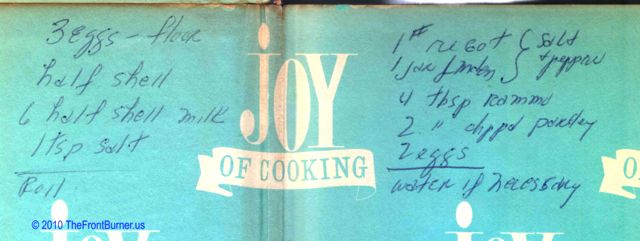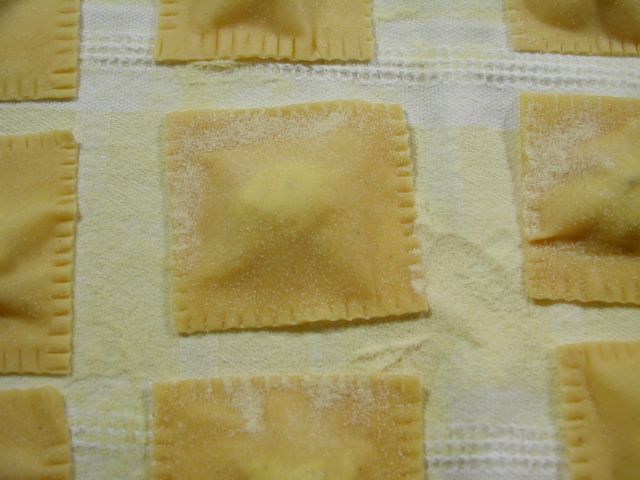Topic Index
The font size for a topic word is sized by the number of articles that reference that topic. The more articles the bigger the font.
Click on a word to search for posts with that topic. This page will reload with the search results.
Corzetti: The Intagliatore of Chiavari

This is Part 2 of a series – The Corzetti Files
For detailed information and photo essays on how to make corzetti, along with recipes, please delve further into The Corzetti Files:
Edible Art, The Corzetti Files – Part 1
The Intagliatore of Chiavari, The Corzetti Files – Part 2
Corzetti agli Spinaci con Gorgonzola, The Corzetti Files – Part 3
Where to Buy Corzetti Stamps, The Corzetti Files – Part 4
Corzetti Stampati – and a Giveaway! The Corzetti Files – Part 5
A Gold Coin
 The pasta we know as Corzetti started with a gold coin, the Genovino d’oro. Rome had fallen, and the curtain of The Dark Ages had descended over western Europe. Trade has fueled society for centuries, and it is trade that brought gold coins and light back to western Europe. The gold came across the Sahara from north Africa and Genoa’s harbor assured her of preeminent mercantile stature. King Conrad granted Genoa the right to mint her own gold coinage in 1252, and these pieces of almost pure gold summon up the history and wealth of The Most Serene Republic of Genoa.
The pasta we know as Corzetti started with a gold coin, the Genovino d’oro. Rome had fallen, and the curtain of The Dark Ages had descended over western Europe. Trade has fueled society for centuries, and it is trade that brought gold coins and light back to western Europe. The gold came across the Sahara from north Africa and Genoa’s harbor assured her of preeminent mercantile stature. King Conrad granted Genoa the right to mint her own gold coinage in 1252, and these pieces of almost pure gold summon up the history and wealth of The Most Serene Republic of Genoa.
 Coming in at about 3.5 grams, the earliest of these coins feature the city gate and to honor King Conrad and his participation in the Crusades, a Crusader cross on the reverse. The coins are covered with a beautiful relief. One of the most famous coins honors the first Doge of Genoa, Simone Boccanegra, and later coins honor subsequent families and Doges. Today one must visit a museum or be fortunate enough to know a collector to view these coins, but with Liguria’s gift to the world of the pasta known as corzetti stampati (kohr-TSEHT-tee stahm-PAH-tee), the legacy of these glorious coins is alive and well and available to us all.
Coming in at about 3.5 grams, the earliest of these coins feature the city gate and to honor King Conrad and his participation in the Crusades, a Crusader cross on the reverse. The coins are covered with a beautiful relief. One of the most famous coins honors the first Doge of Genoa, Simone Boccanegra, and later coins honor subsequent families and Doges. Today one must visit a museum or be fortunate enough to know a collector to view these coins, but with Liguria’s gift to the world of the pasta known as corzetti stampati (kohr-TSEHT-tee stahm-PAH-tee), the legacy of these glorious coins is alive and well and available to us all.
A Piece of Wood
I have an ongoing love affair with handmade pasta, and this one captivated me from the start. Imagine my delight when I discovered its history, how it was made, and that I could do it at home. All I needed was a corzetti stamp, the two piece tool that cuts and imprints the pasta. By the way, you may come across pasta in shops, in recipes or on menus called croxetti, crosetti or curzetti – these are all names for corzetti. Read the remainder of this entry »
Mom’s Ravioli: Part One – Old Cooks and Old Recipes
That is the Crocetti Family Ravioli recipe in its entirety as my grandmother, Angela Barra Crocetti, (known as Mom) dictated it to my mother, Josephine. My mother, known to all who loved her as Jeff, transcribed the recipe in the endsheet of her 1962 edition of the American classic, Joy of Cooking. There are no other directions. This recipe assumes a level of proficiency that any good Italian girl would have achieved by the age of fourteen. One of my fondest memories of Mom was sitting at the kitchen table in her home on Inglewood Boulevard in Los Angeles with the sunlight streaming in over my left shoulder. I remember it as though it were yesterday. Mom placed her spianatoia (wooden pastry board) on her kitchen table. She scooped a mountain of flour onto her board, dug a well in the center and into that well she cracked the eggs. In went the salt. Now it was time for the milk. Yes, the milk. I know. Well, back then I didn’t. Most pasta recipes, if they call for any liquid other than eggs will call for olive oil or water. But some Italian cooks often use milk for their filled pastas. And she measured that milk in the most charming fashion, in the half shell of a cracked egg. No need for a measuring cup. This was Italian home cooking from the ground up. She made but one concession to the modern age, but more on that later. She took her fork and began to beat the eggs, salt and milk in her well. As she agitated the ingredients she brought in the flour, bit by bit, incorporating it until she had a shaggy mass. Down went the fork, up went her sleeves, and she began to knead the big mass of dough. After about ten minutes she was satisfied with her supple dough. I was amazed. She covered it with a kitchen towel and we went into her sewing room.
After about half an hour we returned to the kitchen to form the ravioli. Mom cut the dough not with a fancy rolling cutter, but with a kitchen knife. She covered what she was not going to use right away, picked up her extra long matterello (rolling pin) and began to work her brand of wizardry on the dough. Back and forth she moved her matterello, coaxing the dough to an ever greater size and greater degree of thinness. To my child’s eye it looked like magic. She rolled over the dough and out to the edge farthest from her, then rolled that far edge of dough over her matterello pulling it back to her, rolling and gathering the dough around it as she worked, sliding her floured hands across the dough-covered tool, stretching it with her hands, then rolling it out to the far edge again. She gave the dough a quarter turn and repeated the process. Over and over. The dough she rolled was gorgeous, so thin I could see the shadow of her hand behind it as she lifted and turned it. Alchemy. And the sound of the dough on the board, sort of a “shh-shh.” Her pasta dough was light, yet strong enough to form into ravioli that kept its integrity when boiled. And that is where I came in. I was responsible for crimping the edges of the chicken and cheese packets she assembled. I used a fork to crimp the edges all the way around, the perfect job for a little girl, the initiation to the women’s kitchen. I remember being so proud when we were finished. It made eating the treasures all the more enjoyable. Remembering those days in her kitchen and looking at the recipe now I am astonished by the economy of tools, not to mention verbiage. No fancy rolling cutter, no Atlas machine, no KitchenAid pasta roller, no measuring cups. In fact, I doubt if she used a teaspoon to measure the salt.
When I was in my twenties I became an altogether obsessive cook, I wanted detail. I needed to know absolutely everything. Ah, if only I had been born into the era of recipes accompanied by step-by step photography. But no, I was taught by cooks who said things like “When it is the right consistency, pour the batter into a pan. Bake in a fast oven until done.” WHAT!! Good grief! What was I supposed to do? Obsessive young woman that I was I wanted particulars. For many years I was utterly constrained by obsessiveness. Ask my friends. They’ll tell you. If a recipe called for 1 1/4 teaspoons of vanilla extract and I had only 1 teaspoon, I did not make the dish. Period. Time has passed, and I now embrace improvisation. I enjoy being one of those cooks who can play in the kitchen and make do with what she has. My Italian forebears made do because they had to. Making do with what one has in one’s pantry is the hallmark of la cucina casareccia (home cooking), la cucina povera (the cooking of the poor.) I am writing this post to tell all of you not to wait until you are my age to feel free in the kitchen. Try new things. Look at the recipes you see here and elsewhere and make them your own. Build on your fundamentals toward a cuisine all your own. And take notes! Let me know what you have tried. I would love to hear from you.
Coming up… Part Two – Making the Ravioli

